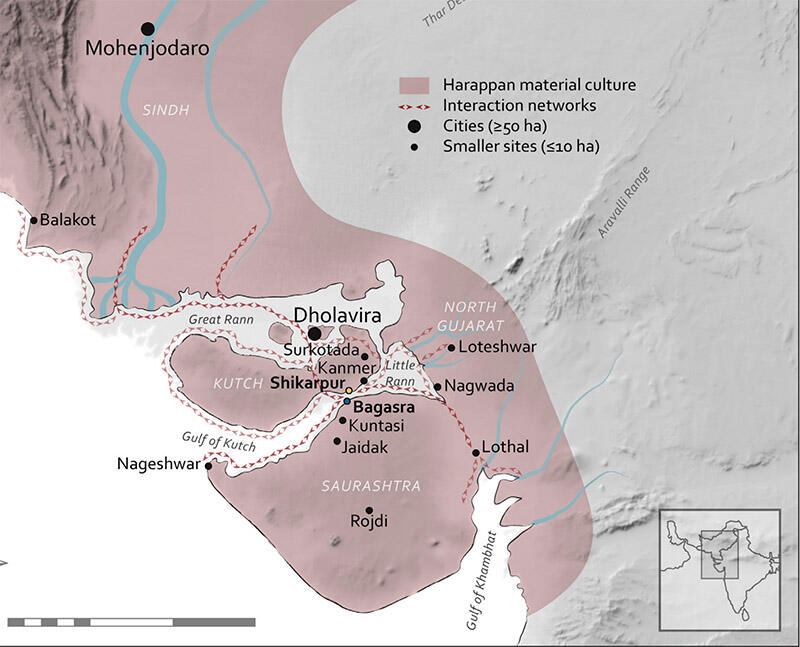The authors take on the complex question of how Harappan or Indus culture made its presence felt in Gujarat from about the middle of the third millennium through the decline of Indus civilization six or seven hundred years later. How did Indus traditions as expressed in material culture and the manufacture of these objects relate to what we see in Indus cities like Mohenjo-daro and Harappa? Was it "colonization?" In particular, they look at two fortified settlements, Shikarpur and Bagasra, and examine the incidence and production of various objects, often very complex ones like shell bangles that required highly skilled workers despite the limited size of the settlements. From this they are able to draw some interesting conclusions that point to distinct ways of integrating Indus traditions in each settlement that preserved, in varying degrees, local cultures and traditions. In short, integrations into Indus civilizations in the so-called borderlands was anything but simple or uniform.
The authors conclude after carefully sifting through the evidence from many kinds of artifacts: "This perspective helps us to interpret several rather enigmatic features of Indus settlements in the borderlands that cannot be satisfactorily explained the top-down models as discussed above. The monumental walled enclosures at both Bagasra and Shikarpur, for example, are clear evidence for the existence of authority capable of organizing space and labor beyond the individual household. Moreover, the repeated maintenance of these structures throughout the occupational sequence at the sites indicates that this authority was maintained for at least several generations. As at most Harappan settlements, however, there is a conspicuous lack of evidence for distinct elite communities such as sumptuous housing or marked class inequalities indicative of early state-level societies elsewhere. Following the model presented above, it was rather extended families that provided the multigenerational structures necessary organize space and labor to construct the walled enclosure and maintain order within the close residential quarters within. Here, the rights and responsibilities of individual residents were structured more by family ties than to other more state-like, non-kin organizations, as was often the case in historical episodes of territorial expansion directed by centralized political authorities elsewhere" (p. 76).
This paper is best read in conjunction with Brad Chase's recent and equally satisfying Family Matters in Harappan Gujarat, which also moves beyond older colonial or "world-systems theories" to explain the diversity of the Harappan presence in Gujarat through kinship structures.
Above: Excerpt from map of the Indus Civilization showing archaeological sites mentioned in the text and the maximum distribution of Harappan material culture

